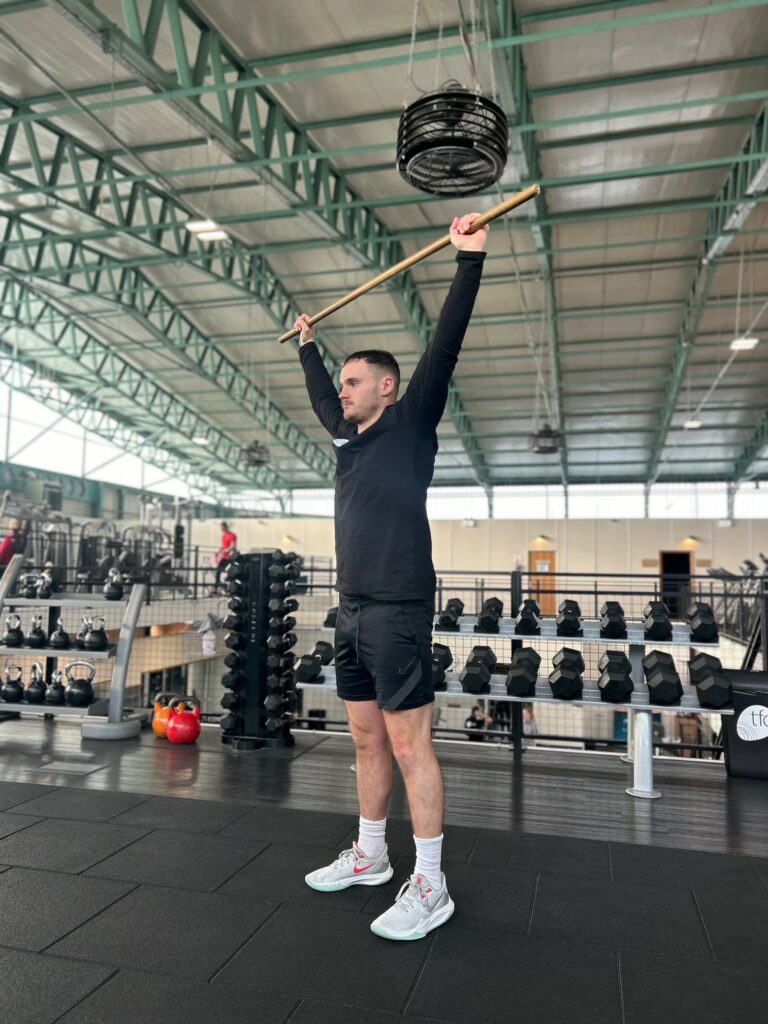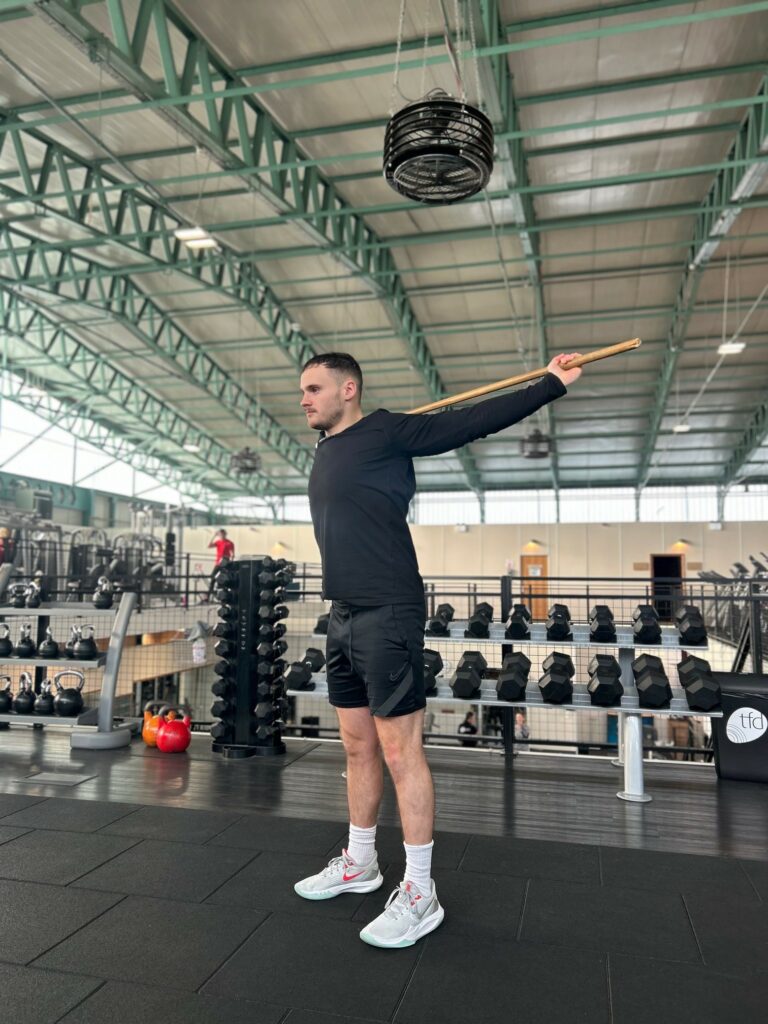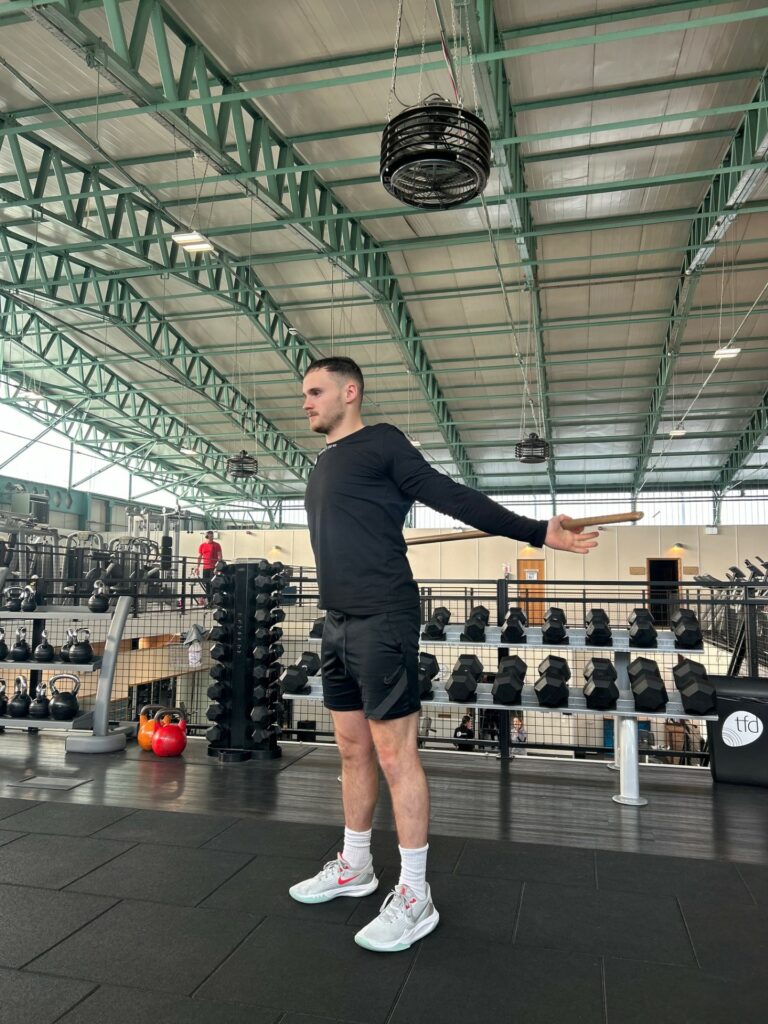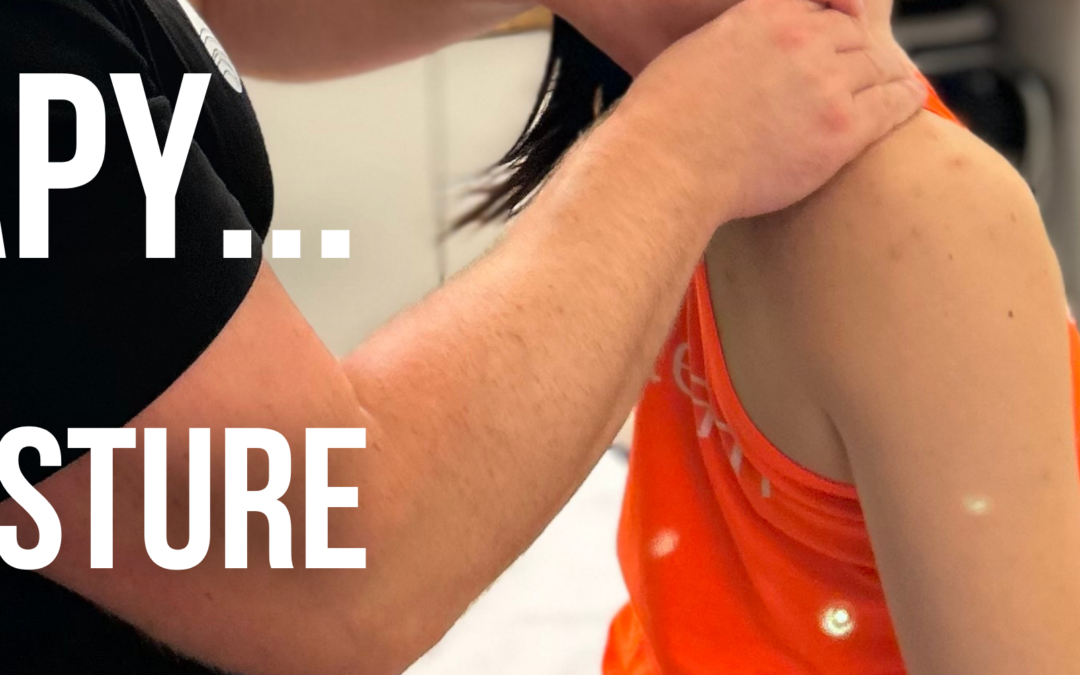Desk posture or “tech neck” is typically used to describe a posture that involves having a hunched neck and rounded shoulders.
So why does this occur?
Generally speaking, this kind of postural issue happens as a result of spending prolonged periods of time in a poor posture position and due to poor length tension relationships between muscle groups. For example, when one sits at a desk for a prolonged period of time, they will likely find themselves with protracted (hunched) shoulders and in a hyper-lordotic (rounded) neck position. If you then spend long periods of time in this position, day after day, you will find that the muscles at the front of the shoulder and chest become shorter, making it harder to return to normal.
So how do we combat this?
In order to address this issue, we need to rectify any length tension issues. What this means is ensuring that any tight/restricted muscles are stretched out and lengthened and any weak muscle groups are strengthened. Normally, this will involve stretching out muscles such as the pectoralis major/minor along with any medial rotators, whilst then strengthening the opposite muscles such as the rhomboids and rotator cuff (teres minor, supraspinatus, infraspinatus and subscapularis).
Stretching the Pectorals and Medial Rotators
These types of stretches will focus on “opening out the chest.” Throughout these stretches focus on your breath doing deep and slow breaths. With each breath you should be able to “sink” into the stretch more. Just be wary of the pressure on your shoulder joint as initially you may feel fairly tight in that area.
If you are particularly tight around your shoulders start with a band. You can include these in your warmups by doing a moving version as shown in the pictures.
Alternatively, you can do these in your cool down stretches by holding the pole/band behind you back in-line with your chest – where there is the largest chest stretch. Hold that position for around 20-30secs, focusing on your breath throughout.



Strengthening the Rotator Cuff and Rhomboids
When strengthening the rotator cuffs and rhomboids a lot of the movements will involve external (lateral) rotation. This is often a movement most people have never performed before. So, it’s a good idea to start easier with a light resistance band. Focus should be put on the quality of the movement with a high degree of control throughout.
Banded External Rotation…
Grip the band tight in the palms of your hand starting with your hands in a “thumbs up” position and arms out in front of you (see picture).
Then, focus on trying to get your thumbs back behind your body as far as possible. As you laterally rotate at the shoulder, the tension in the band will increase. You should finish the movement with your hands supinated (palms facing the sky) with a strong contraction in your rotator cuffs and upper back.



Try these to get you start fixing your desk posture! You can book a postural assessment in with Josh by speaking to reception.

